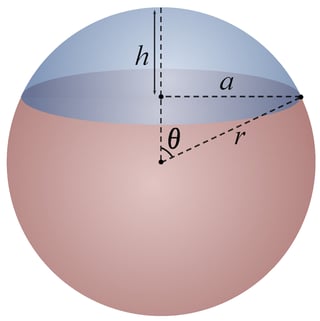Caveat: I gloss over constants, but it still holds.
Consider the basic case of projecting the 3-d sphere $S^2$ onto $B^1=I$. Let's answer the question what is the probability of a point (x,y,z) having z value between z and z+dz. If we use spherical coordinates, we have $\sin(\varphi_1)=z$. The probability of a "belt" is its area. The area is the width $d\varphi_1$ times the circumference of a circle at that "latitude" $\varphi_1$ which has radius $r=\cos(\varphi_1)$:
$P(z<z'<z+dz) = 2\pi r d\varphi_1= 2\pi \cos(\varphi_1)d\varphi_1$
But since $\sin(\varphi_1)=z$, taking differentials we have $\cos(\varphi_1)d\varphi_1=dz$. Intuitively, this is because the width of the belt has an angle with respect to the z axis, so for example close to the pole a small segment in z produces a very wide (though short) belt, in a way that just cancels out.
So
$P(z<z'<z+dz) = 2\pi \cos(\varphi_1)d\varphi_1 = 2\pi dz $ which is independent of z, so constant. We've reduced one spherical coordinate $\varphi_1$ to project to a lower dimensional ball.
Now, if we consider the n-dimensional sphere $S^{n-1}$ we can use similar coordinates, and reduce $\varphi_1$ again to find the belt of $(x_1, x_1+dx_1)$. This time, the radius of the (now not circle but) $S^{n-2}$ sphere is the same as before, $r=\cos(\varphi_1)$. Its surface is then proportional to $r^{n-2}=\cos^{n-2}(\varphi_1)$, and for the probability we need to multiply by the width which is again $\cos(\varphi_1)d\varphi_1=dx_1$.
So we have $P(x_1<x_1'<x_1+dx_1) = \cos^{n-2}(\varphi_1)d\varphi_1 = \cos^{n-3}(\varphi_1) dx_1 $
If $n \neq 3$ this probability now is dependent on $x_1$. But if we reduced it not to a single coordinate $x_1$, but to a shape which has the same density as a function of $x_1$ we could have a uniform distribution over that shape. The ball $B^{n-2}$ has precisely this density as a function of $x_1$. If we don't reduce the dimension by 2, but by something else, we would not have the right density for each belt in $x_1$. If you think about it, for reasons of symmetry if it holds for $x_1$ it follows that it's uniform on the ball, but I'm not going for a full proof here.
These are the closest illustrations I could find.



